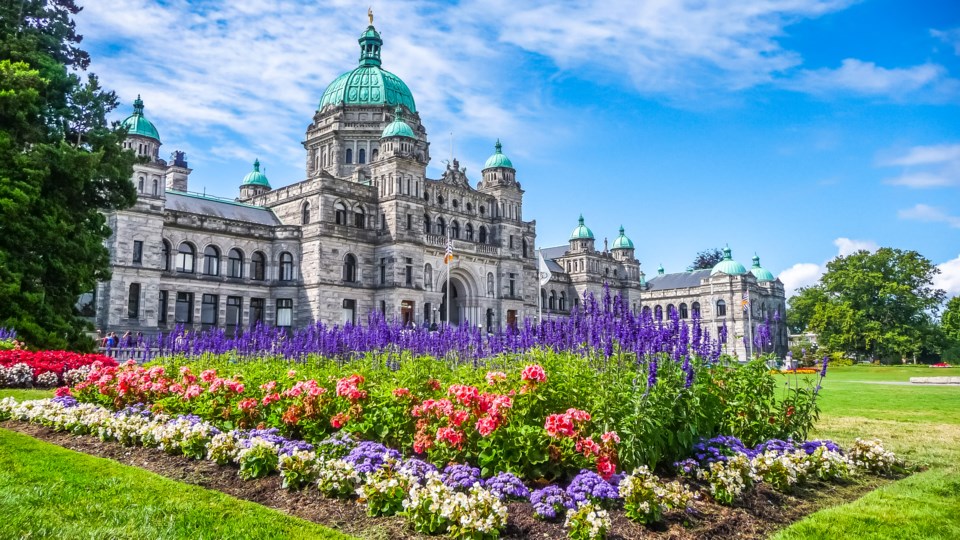While no provincial election is scheduled in British Columbia until October 2021, there were many discussions earlier this year about the possibility of an early ballot.
A series of events, including the appointment of a new full-time leader for the BC Green Party, could have facilitated an election call under normal circumstances. All that talk has been shelved. COVID-19, as we have all become used to, is not a normal circumstance.
Just over three years ago, British Columbians went to bed after an exhausting election night without knowing who would form the government. There are still 20 months to go before we cast a ballot again, following a change that effectively ended our spring elections and moved them – unless a government is defeated or engineers its own demise – to the month of October.
Research Co. and Glacier Media looked at the current state of affairs in the province and found a unique political panorama. The pandemic has affected how residents perceive the most significant challenges that will come our way. The approval rating for the two main party leaders improved dramatically. There is also a certain level of hesitation from voters about casting a ballot for one of the two minor parties.
This month, British Columbians are deeply divided on issues for the first time in several years. Housing, homelessness and poverty – the perennial top concern – has dropped to 21%, but remains crucial for those aged 18 to 34. Health care is now first across the province with 28%, and jumps to 38% among those aged 55 and over. Residents aged 35 to 54 are more likely to be concerned about COVID-19 right now.
On voting intention, the BC New Democratic Party (NDP) holds an eight-point lead over the BC Liberal Party (41% to 33%). Both parties have gained slightly (two points for the New Democrats and three points for the Liberals) since we last .
The BC NDP is holding on to a high level of support among two key demographics: voters aged 18 to 34 (46%) and women (45%). A silver lining for the current government’s chances of securing a new term can be seen with voters aged 35 to 54, where the New Democrats are currently 10 points ahead of the BC Liberals.
The BC Liberals are neck-and-neck with the governing party among men and voters aged 55 and over. On a regional basis, the official opposition trails in Metro Vancouver, but keeps a solid base of support in southern B.C. The main hindrance for the BC Liberals is the apparent re-emergence of the BC Conservative Party, currently at 8% among decided voters and bringing some 2017 BC Liberal voters into their tent.
Over the past decade, the level of support for the BC Conservatives has tended to flow with the success of its federal namesake. This is a party that can “poll well” in the middle of a term, but whose ultimate success hinges on the arduous task of recruiting candidates for every constituency. A ray of hope for the provincial Tories is the approval rating of leader Trevor Bolin reaching 35%, but the exact same proportion of residents do not have an opinion of him.
The BC Green Party is rebuilding, with interim leader Adam Olsen posting an approval rating of 49%, one point ahead of the improved indicator for BC Liberal leader Andrew Wilkinson. However, the numbers for the Greens are not as great as they were last year, and their level of support has dropped to 16% in their stronghold of Â鶹´«Ã½Ó³»Island. Time will tell whether this is a lull brought on by the absence of a full-time leader. In any case, the party will need to reconnect with former voters and endeavour to grow in the Lower Mainland.
There is a noticeable jump in the approval rating of Premier and BC NDP leader John Horgan, from 51% last year to 73% in 2020. The shift is an unmistakable reaction to the provincial government’s handling of the COVID-19 pandemic, which reached a level of satisfaction of .
The untrained eye could glance at Horgan’s numbers and assume that the New Democrats would enjoy a massive victory if British Columbians voted today. Aside from the fact that the election is still months away, it is possible to have an approval rating that borders on three quarters of residents and still see a party below the 45% threshold in voting intention. There are many reasons for this, including local connection with candidates and sitting legislators, issues and, of course, campaigns.
On the other side of the aisle, Wilkinson’s approach to opposition during the COVID-19 pandemic has been rewarded with an approval rating that his predecessor, in government, never reached. The challenge for the BC Liberals will be to make the party more attractive to women and young voters in the next 16 months. The announced retirement of the unpopular figures that are richly responsible for the repulsion of the past will only help.
Mario Canseco is president of Research Co.
Results are based on an online study conducted from May 23 to May 25, 2020, among 800 adults in British Columbia. The data has been statistically weighted according to Canadian census figures for age, gender and region in British Columbia. The margin of error – which measures sample variability – is +/- 3.5 percentage points, 19 times out of 20.



